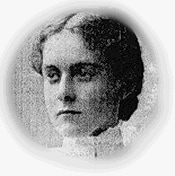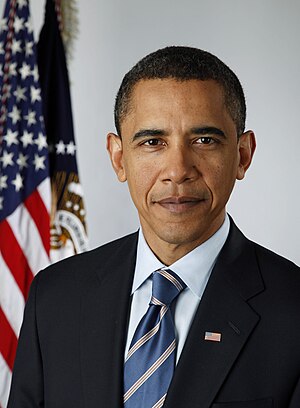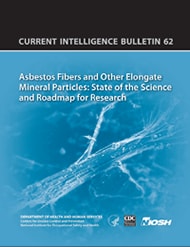Guest Blog by Leonard T. Jernigan, Jr.
The book, Confessions of a Union Buster, gives us insight into the active national agenda of Corporate American to redesign the nation's workers' compensation system through a conspiracy employing the use of smoke and mirrors.
Martin Jay Levitt, who performed despicable acts as an employer-sponsored union buster for over 20 years, has written a book detailing his activities. In an effort to cleanse his soul, Levitt has written candidly, admits that it was a “dirty business,” and even acknowledges criminal activity. Many of the tactics he used and the derogatory attitudes toward workers have an alarming similarity to the attacks on injured workers seen over the last two decades. For example:
He and his colleagues routinely pried into workers’ police records, personnel files, credit histories, medical records and family lives in search of a weakness that they could use to discredit any employee who favored unions.
In Sebring, Ohio Fred Moracco was a manager who was fiercely independent and sympathetic to union organization efforts. When he did not follow the company plan to discredit the proposed union, he was asked to sign a letter of resignation. He refused and was fired. A rumor was then started that he had stolen $13,000.00 and the local newspapers picked up the story. He was ruined. He lost his job, pension benefits, health and life insurance and never worked again.
Others who failed to go along with the anti-union program drew lousy shifts, would be harassed, shunned or punished to such an extent that life became so unbearable they decided they owed it to their families to quit and find another job. If abuse didn’t work, they would be fired. Levitt had no problem with depriving people of medical plans and vacation benefits if that was needed to get the job done. Thousands of men and women -- and their children -- would suffer because of his reckless drive for power and money. When asked if he could see their faces, he replied: “No....It was nothing personal.”
The rallying cry for business was “control labor costs.” That meant, according to Levitt, cut people’s pay. Initially focusing on the construction industry, employers alleged that high wages led to high-cost construction, which meant high-cost for everything else. The Labor Law Study Group (later called the Construction User’s Anti-Inflation Roundtable), a consortium of more than 1,100 businesses nationwide (including AT&T, Union Carbide, Exxon, GM, B.F. Goodrich, Chrysler and IBM, etc.) were instrumental in introducing so-called labor law reform bills before Congress. Their initial goal was to repeal state and federal laws for minimum wage standards in public construction projects.
Levitt and his co-horts used the non-scientific “opinion survey” as a tool to convince businessmen that a labor consultant was needed. The results were inevitable, no matter what the company looked like. An attitude assessment survey was later developed, as well as a battery of psychological tests that purported to be capable of identifying a proclivity toward theft, union activity and other undesirable behavior. Levitt knew that these tests were a sham and a fraud from the beginning. “The employer attitude survey is a shameful example of science twisted into service by industry.”
In 1979, then-Labor Secretary Ray Marshall rejected a federal government report inspired by pro-business groups that urged the repeal of protective labor legislation. He stated: “The report states that these federal laws have an inflationary cost of $715 million. However, because the report candidly admits that over two thirds of this estimate is based upon data which have no statistical validity....” the conclusions were flawed.
Levitt also kept a stockpile of quasi-scientific data that he could tap into when requested to justify his claims. “Most of my data were accurate, if incomplete and totally lacking in context; some of them I just made up.”
Union busters developed insidious double speak which infiltrated labor-management relations. They encouraged a fundamental distrust of workers, and a fear of unions so powerful that every employee program was twisted into a tactic to destroy the collective spirit of workers, no matter how noble its original intent. Frightened managers were easily duped and corporations paid out enormous amounts of money to hucksters like Levitt, based on false information.
Having gained experience fighting hotel and restaurant unions, Levitt sent out seminar brochures across the country marketing his expertise and spreading fear. He included newspaper clippings from a Las Vegas strike, and the brochures included a blend of truth and distortion, by design. His seminars were filled and he pedaled the lies necessary to keep them filled. “My clients never heard the truthful version of the law, nor did they care to.” While fighting unions he intentionally spread misinformation among the workers and got them confused. A union meeting might last three-four hours because the organizer spent so much time straightening out Levitt’s twisted disinformation.
In 1935 The National Labor Relations Act (commonly called The Wagner Act) established the right to organize. As part of Franklin Roosevelt’s New Deal, it prohibited many union busting tactics (spying on and intimidating union activists, provoking violence, and enticing workers into management controlled company unions). The National Labor Relations Board (NLRB) was established to enforce The Wagner Act.
After World War II, corporate America unleashed an angry anti-labor propaganda campaign. It created the myth that companies were at a disadvantage, legally and financially, during a union drive. Unions were characterized as fat, greedy, corrupt and un-American, and employers demanded that Congress amend The Wagner Act. In 1947, after a long debate, conservative congressmen passed a sweeping reform call The Taft-Hartley Act. “To this day union leaders consider The Taft-Hartley Act a primary cause of labor’s failure to organize the majority of American workers.”
In 1959 the Landrum-Griffin Act was passed. This law required unions and employers to report and disclose all union activities and expenditures. One part of the law required companies to report anti-union activities, including the hiring of labor consultants (like Levitt). “Had it not been for a couple of well-placed loopholes, these disclosure provisions would have snuffed out the anti-union consulting industry in its infancy....but the loopholes in Landrum-Griffin are shameful, enormous, gapping errors in the law that have left room for a sleazy billion-dollarindustry to plod through without even sucking its bloated middle.” Levitt never filed with Landrum-Griffin in his life, and few union busters did.
After nine months of foot dragging by the company he represented in negotiations, a strike was imminent. The union suggested that a federal mediator be brought in. Levitt agreed, not because it would help but because it would just keep the process stalled. “I knew the federal mediator system was bullshit, so I wasn’t worried...It just used up time and made me look as though I were really trying. Meanwhile the clock went tick, tick, tick, tick.”
On one occasion a labor lawyer refused to bargain in bad faith (also called “surface bargaining”) because it violated the NLRB as well as the lawyers Code of Professional Conduct. Since no ethical code existed for labor consultants, Levitt was more than willing to sit at the bargaining table with absolutely no thought of working toward any settlement. He simply used that process to delay proceedings further.
In the early 90's there were over 7,000 attorneys and consultants in the United States who made their living busting unions. A consultant billed $1,000-$1,500 a day and an attorney billed $300-$700 per hour. It was a one billion dollar plus industry, and employers paid willingly. One employer paid Levitt $15,000 a month. It would have taken two years for one of the regular employees (a housekeeper whose job was changing sheets and scrubbing floors) to earn that much money.
United by their fear of an organized work force, employers formed networks – both local and national – to spread the word about union busting and to get support for anti-union legislation. One of the most notorious networks was the Associated Builders and Contractors (ABC). It sent a well-dressed public relations team around the country promoting the concept of a merit shop (pay by merit, not contract). According to Levitt, it was just a ruse to sweet-talk the public into accepting non-union, lower-pay jobs in construction, and it worked. By the mid-1980's, ABC had 18,500 members.
Another group was the National Right to Work Committee, first established in 1955. By the 1970's it began to spread out into state organizations and some of these tried to hide their affiliation (like the Californians for the Freedom to Work) because everyone recognized the Right to Work Committee as an anti-union organization.
Levitt considered the powerful National Association of Manufacturers the granddaddy of the corporate anti-union conspiracy. It had fought unions since 1903. In 1977 it created the Council on a Union Free Environment specifically to defeat President Jimmy Carter’s attempt at a significant labor law reform bill. The Council succeeded.
Local 47 of the Service, Hospital, Nursing Home and Public Employees Union attempted to organize the workers at Copeland Oakes, Inc., a retirement home in Ohio. About 170 (60%) of Copeland’s hourly employees, who were making a few pennies over the minimum wage, were ready to petition for a union. As the fight approached Christmas Eve, Levitt wanted to make the union look bad, hoping to turn the tide. He dispatched a few commandos to scratch up cars of pro-company employees and make threatening calls to others. The president of the company then wrote a letter blasting the union for such outrageous scare tactics.
In 1977 Levitt named his consulting company “Employee Unity Institute” and ran workshops on counterorganizing campaigns. He was even hired by Actor Clint Eastwood for the trendy Carmel eatery, Hog’s Breath Inn, and did many other jobs for the National Restaurant Association. “What I taught I presented as science, but really it was an art, the art of illusion.”
A union film, Like a Beautiful Child, documented a 100 day strike in 1969 by 500 South Carolina hospital workers, mostly black women, who demanded the right to organize. They eventually won and got substantial raises and better working conditions. Levitt used the film against union organizers at hospitals and factories alike, “...to awaken within the mostly white supervisor corps a hatred of blacks, fear of violence, contempt for women, mistrust of the poor, and, of course, a loathing for the union that brought together all those despicable elements.”
In his first year in office President Reagan filled the National Labor Relations Board (NLRB) and its regional agencies with pro-management members. The President also slashed the Board’s budget, making it difficult for agents to carry out full, lengthy investigations. That made it harder than ever for unions to convince the NLRB to issue unfair labor practice complaints.
Reagan, a former union official himself as one time President of the Screen Actors Guild, displayed his contempt for organized labor when he pulled off the biggest union bust in history. In 1981 he fired 13,000 striking federal air traffic controllers, who were essentially striking for safer working conditions, and prosecuted 5 union leaders under a never-before-used law prohibiting strikes against the government. He made union busting an act of patriotism and when Levitt realized this development, he just grinned.
Levitt once visited a plastic manufacturing plant in Ohio, and had to keep his mouth from dropping open. He was both astonished and appalled . He had been in factories before, but only once had he seen a plant dirtier than this one. In some areas the air and floor were thick with colored dust, greens, browns and blues. Men and women labored over the large machines, lifting and pouring bags of colored powder, scrapping multi-colored globs out of equipment, adjusting levers and plates. The starting workers made about $4.50 an hour and had to breathe dangerous levels of lead and cadmium-tainted paint dust. In 1980 safety inspectors fined the plant $1,800 for high levels of lead in the air. A year later another fine of $680.00 was assessed for the same problem. After a third fine for $1,000 was assessed, the company still made no real improvements or changes to help the workers. When the workers began to consider creating a union, the company hired Levitt to prevent that from happening. He succeeded.
All of the deception and blindness to human suffering took its toll on Levitt. He had been drinking heavily, never seemed to have enough money and hated the way he felt. It eventually led to alcoholism, bankruptcy and divorce. In his recovery, he began to see clearly what he had become and what he had done. His book is an attempt to help destroy “...a mentality that condemns millions of American workers to a life of futility and humiliation.”
Although Levitt’s book is not a literary gem, it is well worth reading and some may consider it mandatory for those who naively think corporate America is inactive and has no national agenda. As the legislative reforms in workers’ compensation laws have moved with increasing speed through the various states since 1980, Levitt’s book helps us understand that the same forces aligned against unions have shifted their focus to the workers’ compensation arena. Levitt indicates the need to expose the lies and distortion used by these forces, either through congressional hearings or other public exposure. For example, he mentions the demise of one of the notorious union busting firms, Melnick, McKeown and Mickus, after government hearings revealed that the defense department spent more than one million dollars toward Rockwell International’s anti-union campaign, most of it going to this firm. According to Levitt, such notoriety did not help these men in their conspiratorial enterprise, since it depended on secrecy. “A master of illusion, the union buster pulls off his tricks amid the confusion of smoke and mirrors; his magic disappears under the blazing lights of center stage.”
Related articles























